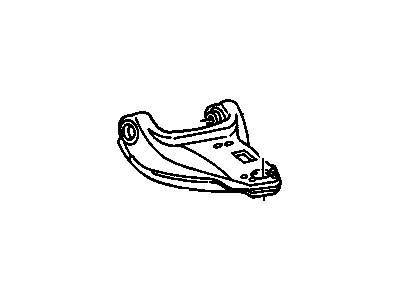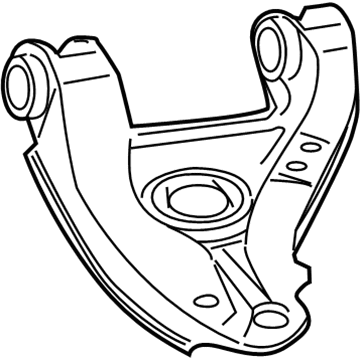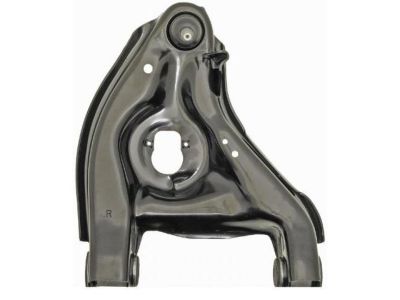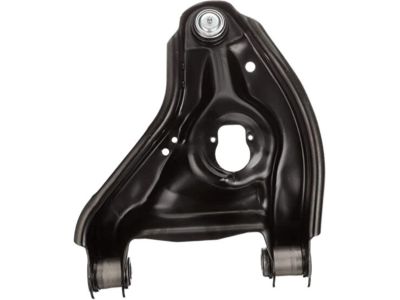
My Garage
My Account
Cart
Genuine Chevrolet C1500 Control Arm
Suspension Arm- Select Vehicle by Model
- Select Vehicle by VIN
Select Vehicle by Model
orMake
Model
Year
Select Vehicle by VIN
For the most accurate results, select vehicle by your VIN (Vehicle Identification Number).
8 Control Arms found
Chevrolet C1500 Front Upper Control Arm Kit (Lh)
Part Number: 12543997$190.38 MSRP: $336.60You Save: $146.22 (44%)Chevrolet C1500 Front Lower Control Arm Kit
Part Number: 19416906$384.91 MSRP: $637.05You Save: $252.14 (40%)Ships in 1-2 Business DaysChevrolet C1500 Front Lower Control Arm Kit
Part Number: 19416905$240.99 MSRP: $398.87You Save: $157.88 (40%)Ships in 1-2 Business Days
Chevrolet C1500 Control Arm
Chevrolet C1500 is a model auto with its Control Arm situated between the frame and the wheels for existing suspension parts such as shocks or springs. These arms turn according to the contact with roads; hence, the wheels are adjustable upwards and downwards. Control arms come in different sizes and are constructed differently according to designs of suspensions, and all have bushes or ball joints for the mounts. Formerly, such lamps were manufactured from stamped steel, and the newer models possess stronger cast iron or aluminum arms. Control arms are extremely sturdy but are also able to degrade over time and develop a rusty hue; they are therefore often replaced. Performance control arms are also offered for the extra horsepower and harsher driving, which enhances the handling as well as the angles of alignment.
Each OEM Chevrolet C1500 Control Arm we offer is competitively priced and comes with the assurance of the manufacturer's warranty for the part. Furthermore, we guarantee the speedy delivery of your orders right to your doorstep. Our hassle-free return policy is also in place for your peace of mind.
Chevrolet C1500 Control Arm Parts Questions & Experts Answers
- Q: How to remove the lower Control Arm on Chevrolet C1500?A:For the removal of the control arm on 2WD models, start by loosening the wheel lug nuts and raising the vehicle on jackstands. Remove the wheel, followed by the coil spring and lower balljoint. Take the control arm to a dealer or shop for any necessary replacements. To install, reverse the removal steps, ensuring the pivot bolts are installed from the front. Tighten all nuts to specified torque and lubricate the new balljoint. For the removal of the control arm on 4WD models, begin by loosening the wheel lug nuts and raising the vehicle on jackstands. Remove the wheel and front splash shield for access. Remove the Shock Absorber, inner tie-rod end, and driveaxle. Loosen the torsion bar adjusting bolt and support the lower control arm with a floor jack. Disconnect the Steering Knuckle from the lower balljoint and lift the assembly up, supporting it with a block of wood. Slowly lower the jack to release tension on the torsion bar. Slide the torsion bar forward and remove the lower control arm and torsion bar as a unit. Check the bushings for damage and replace if necessary. To install, insert the torsion bar into the lower control arm and raise the arm into position, inserting the rear end of the bar into the crossmember. Position the lower control arm in the frame brackets and install the control arm pivot bolts, washers, and nuts. Slide the torsion bar back into the adjusting arm. Raise the lower control arm with the floor jack and insert the balljoint stud into the steering knuckle. Install the balljoint stud nut and tighten. Install the driveaxle, connect the inner tie-rod to the relay rod, and install the shock absorber. Connect the stabilizer bar and install the wheel. Lower the vehicle and tighten the lug nuts. Install the splash shield and measure the vehicle's ride height to ensure it sits level.








